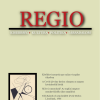Testimonial Drawings as Schoolwork in the Immediate Aftermath of the Holocaust
Viktória Bányai and Rita Horváth's article "They Drew What Was in Them: The Past, the Present" Testimonial Drawings as Schoolwork in the Immediate Aftermath of the Holocaust was published in the journal 2/2023 issue of the journal Shoah: Intervention. Methods. Documentation (S:I.M.O.N.)
Abstract
A source group consisting of twenty-six drawings that was created by thirteen- and four-teen-year-old survivors in the immediate aftermath of the Holocaust is analysed in this article. The youngsters who drew the testimonial drawings as compulsory school assign-ments were pupils of the High School for Girls of the Neolog Jewish Community of Pest. Our aim is to demonstrate that these drawings are crucial historical sources that document both the Holocaust and its immediate aftermath. Until recently, these kinds of documents have been routinely viewed as merely marginal sources of historical information, mainly because they are visual in nature and were created by young teenagers. Certain factors, such as the school environment, age, gender, and the shared historical experiences of the chil-dren turn the drawings into a source group from which additional information can be gleaned by analysing the individual pieces in one another’s contexts. The analyses of the drawings show that the girls consciously took the role of the witness upon themselves. We also examine how the fact that these drawings were created by females influences the source group.









